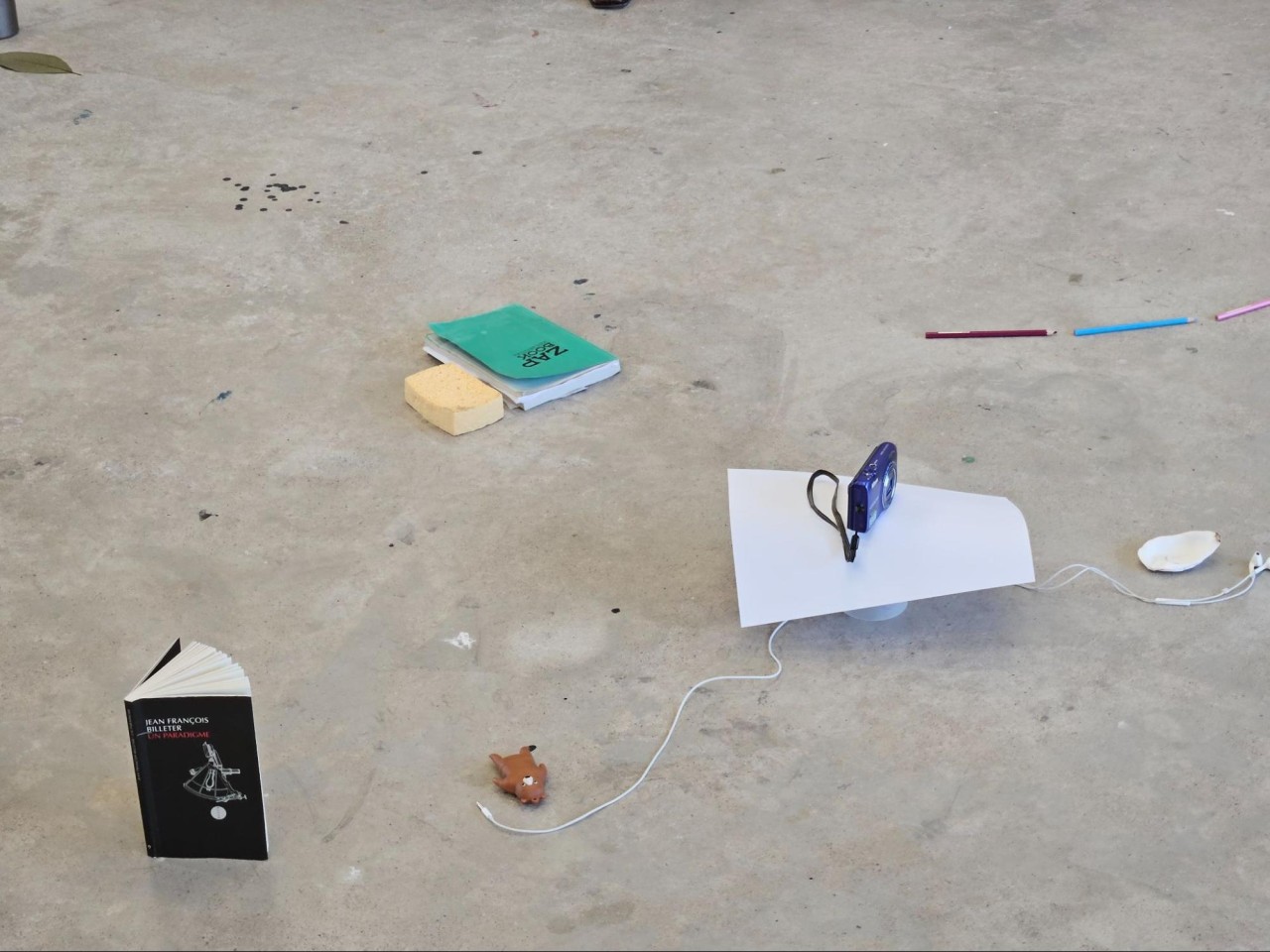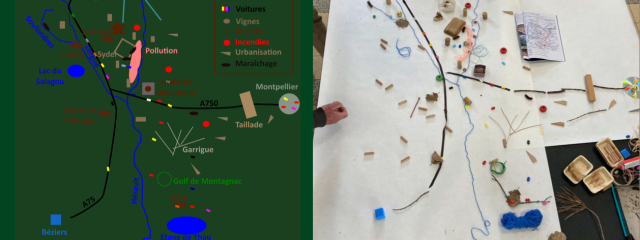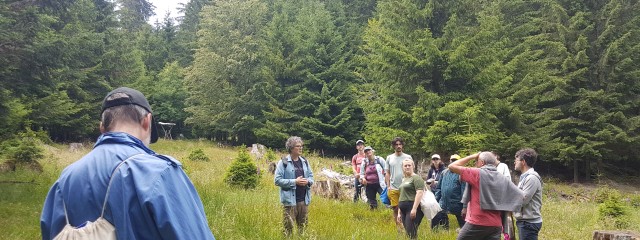Cosmogramming
see analogies emerge and feel them
This practice is currently being developed in a variety of contexts (associations, arts, activism, and research).
In the cosmogram as we practise it, objects brought by participants are intuitively placed on a surface, each becoming an entity representing an idea, a sensation, a living being, a process, or a lived moment. The process begins with observation and inner listening, allowing objects to be selected and arranged without analytical reflection. Each participant may take an object and place it according to their feeling, briefly stating the entity it represents, without detailing the relationship between the object and the entity.
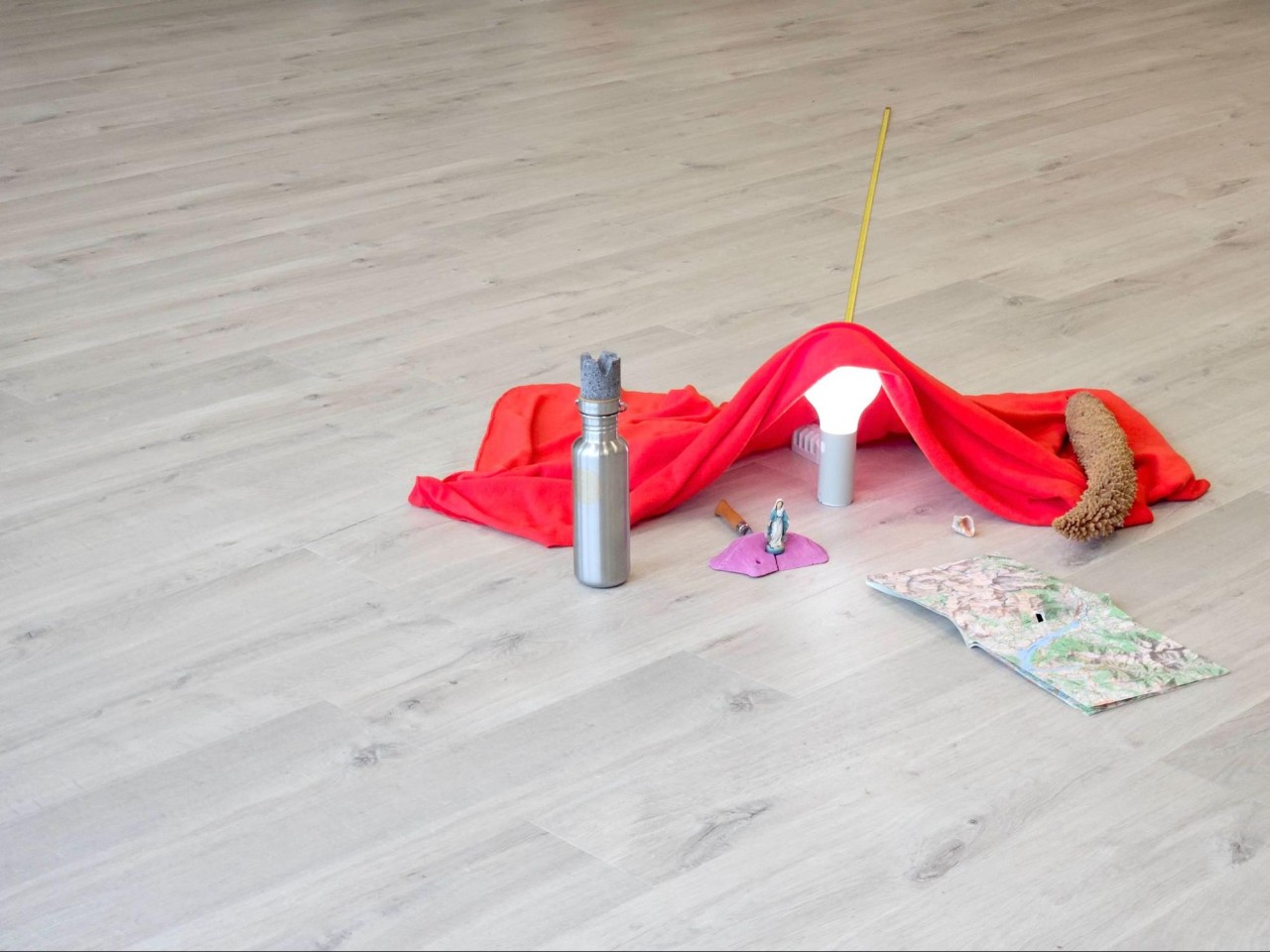
The cosmogram, in constant evolution, becomes a field of collective awareness where participants observe the effects of their actions and note their sensations. Objects may be moved or removed, which corresponds to a shift in attention rather than an act of deletion. This process highlights the evolving relationships between entities and the changing quality of their interactions.
The collective practice of the cosmogram involves an exploration of emerging analogies, without seeking to understand individual logics or to construct a collective one. Objects may appear to form geographical, thematic, or systemic representations, but the aim is simply to experience the emergence of analogies and to be surprised by the intuitive readings that result.
Once the allotted time has passed or a configuration has stabilized, participants share their experiences and interpretations, enabling new discoveries and associations. This sharing phase fosters trust in one’s own perceptions and enriches the experience through the diversity of possible readings.
Cosmograms enable the emergence and felt sense of partial interrelations between entities associated with a shared experience. The practice supports the integration process while allowing a wide range of directions to emerge for continuing or recounting the experience. The effects sometimes unfold over several months. Rather than stabilizing a shared representation, cosmograms bring forth new points of attention for exploring alternative meanings and developing analogical intelligence.
To go further, John Tresch’s lecture « Cosmograms or how do Things with Worlds » (Anthropocene Curriculum, HKW, 21 janvier 2013)
Traces of practices
La Rivoluzione delle Seppie
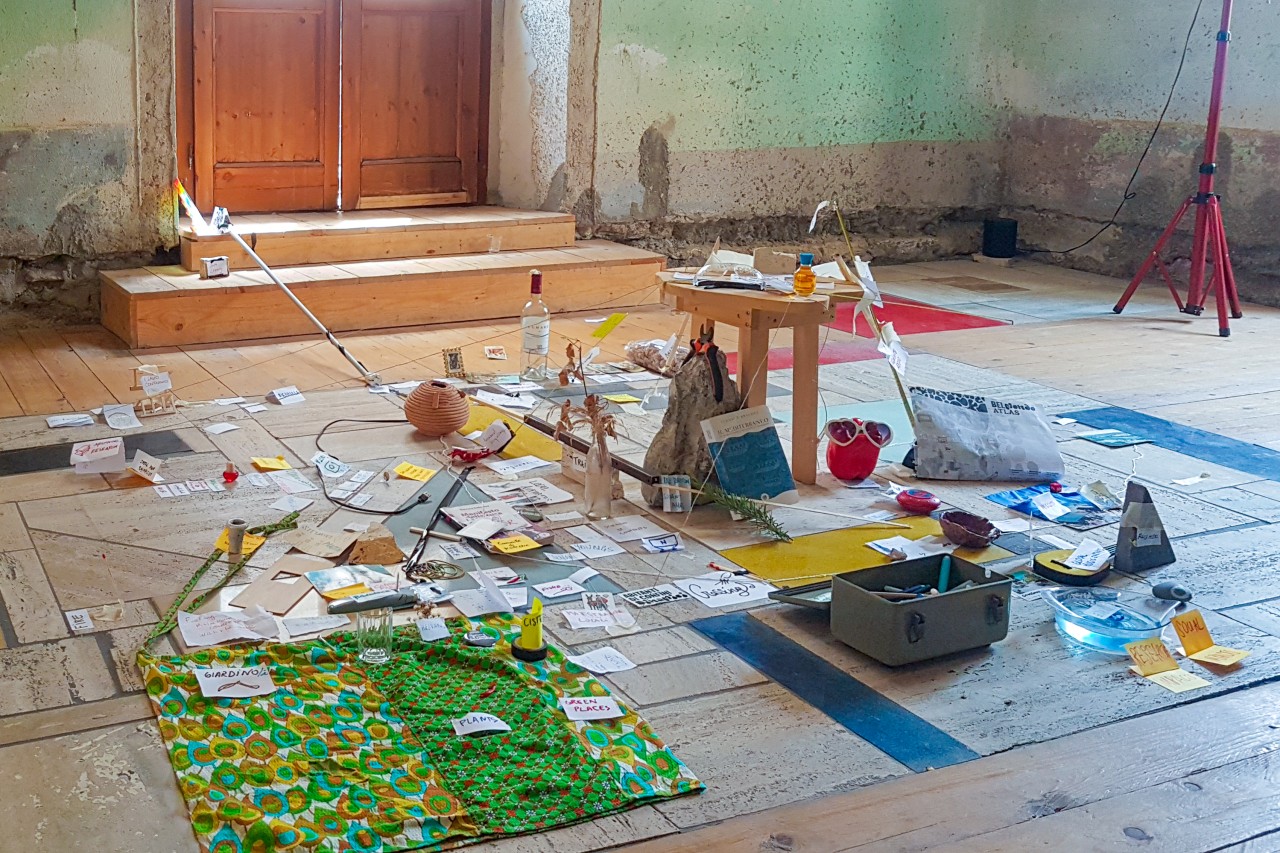
La Rivoluzione delle Seppie is a transdisciplinary initiative of international professionals aiming to revitalize marginal areas in Calabria. By reinvesting abandoned spaces and fostering the exchange of knowledge, they seek to create a new community exploring alternative forms of collective living and working. IHEPAT intervened as part of a moment of reflection on the collective’s activities since its founding in 2017.
The temperature is around 38 °C. Some participants are napping. ‘We are still alive.’ On the fresh marble floor, we arrange labelled objects from the house taking place for entities. We attempt to create a cosmogram – a dynamic object constellation that embodies the place ecology of practices. Several entities come again many times. We communicate in Italian, French, English, and Spanish. Words also appear in multiple languages. Everyone is simultaneously excited and puzzled. It’s challenging to remain amidst the fog left by the absence of the usual abstractions. One participant crochets; someone notices the analogy with those who come and go; another clarifies labels; another intuitively places objects quickly; yet another waits, unsure of how to proceed. Others discuss actively. Local inhabitants display archival items – flags, books, postcards. The ink from the source label fades as water drops, leaving us to wonder, ‘Where did the water go?’ Although some noticed this, there was little reaction in the group. The sun from the window reaches the ‘market’, and the fan, humorously labelled climate change, threatens the cosmogram's stability. Should the wind direction shift, we would need to redistribute all papers.
Sponsors are depicted as religious icons. A train connects London with the shore, symbolizing personal journeys that begin at the train line, ascend to La Casa, and diverge into an uncertain future. Local authorities, though deemed important, are still represented minimally. ‘We should expand it!’ Soon, they become tarot cards. The sun has pushed the market closer to the centre. Occasionally, we pause to roll a cigarette. Questions arise: ‘Are there any journalists you work with?’ ‘Where are the spritzes?’ The cosmogram thickens; the space around it helps unfold its elements, yet connections remain unresolved, and their representation is still undecided.‘We should let it sediment, take a moment of integration, and then revisit it,’ someone suggests. ‘Where are the celebrations?’ ‘They should be included in the glocal tools.’ ‘They are everywhere!’
Suddenly, climate change becomes disruptively noisy – "Clac Clac Clac Clac Clac Clac Clac Clac Clac Clac" – yet there are no reactions. We can’t imagine stopping the fan. The room gradually empties; what began as a collective effort dwindles to only five people as the heat intensifies. Climate change falls and stops abruptly. La pergola is extended to shield the cosmogram from the sun. The glocal tool gained prominence and became a large metal toolbox next to the crossing festival. ‘The purpose of the glocal center is to care for the commons,’ someone states, ‘aiming to mediate common health without fostering dependency’. Although crucial in discussions, The Glocal Center is ambiguously small in the cosmogram. A string links it to other parts. ‘The Glocal Center formalizes long-standing activities.’ Eventually, the sun reaches the center of the marble near the mountain on which La Casa is perched. Here comes the elixir of youth, potentially preserving the status quo. Yet, what options remain if it’s not available?
Transversal research seminar Acclimatements
I placed an A4 sheet on the ground, calling it “the membrane, that which protects our collective experience.”
This sheet was moved above a cup representing the group, to which a bracelet had been added to symbolize the morning embodiment practices. I’m trying to unfold what appeared to me earlier in the cosmogram.
From above, the membrane is a surface. One doesn’t even know there is something underneath. From a bird’s-eye view, at a 45-degree angle, one can guess at a volume without knowing what lies beneath. If the posture shifts—by leaning in, for instance—one begins to see feet. Without fully understanding what is there, one senses a presence. For example, our morning embodiment practices would not be visible. But by approaching the ground, what is at work becomes increasingly apparent, and the membrane, once immersed in the experience, ends up disappearing; it is no longer seen—we see only the edge of a sheet of paper.
Once inside the group, under the protection of the membrane, it becomes visible only if one looks up. It protects us. We can verify its presence. It allows us to no longer see those looking down on us.
We usually think of membranes in terms of who is allowed in or not. Who I am determines my access. The shape or size of my body allows or prevents passage—like droplets being too large to pass through a surgical mask, unlike air.
Our membrane does not filter based on who I am, but on how I engage. It is not my form or identity that prevents access, but my distance, my posture, or my perspective. If I agree to come down to ground level—if I’m willing to lie down, to take time to find the angle—I can access the experience.
If I remain outside, I never feel pushed away. I haven’t encountered a barrier. The nature of my engagement simply did not allow me to access the dimensions that matter to those within the experience.
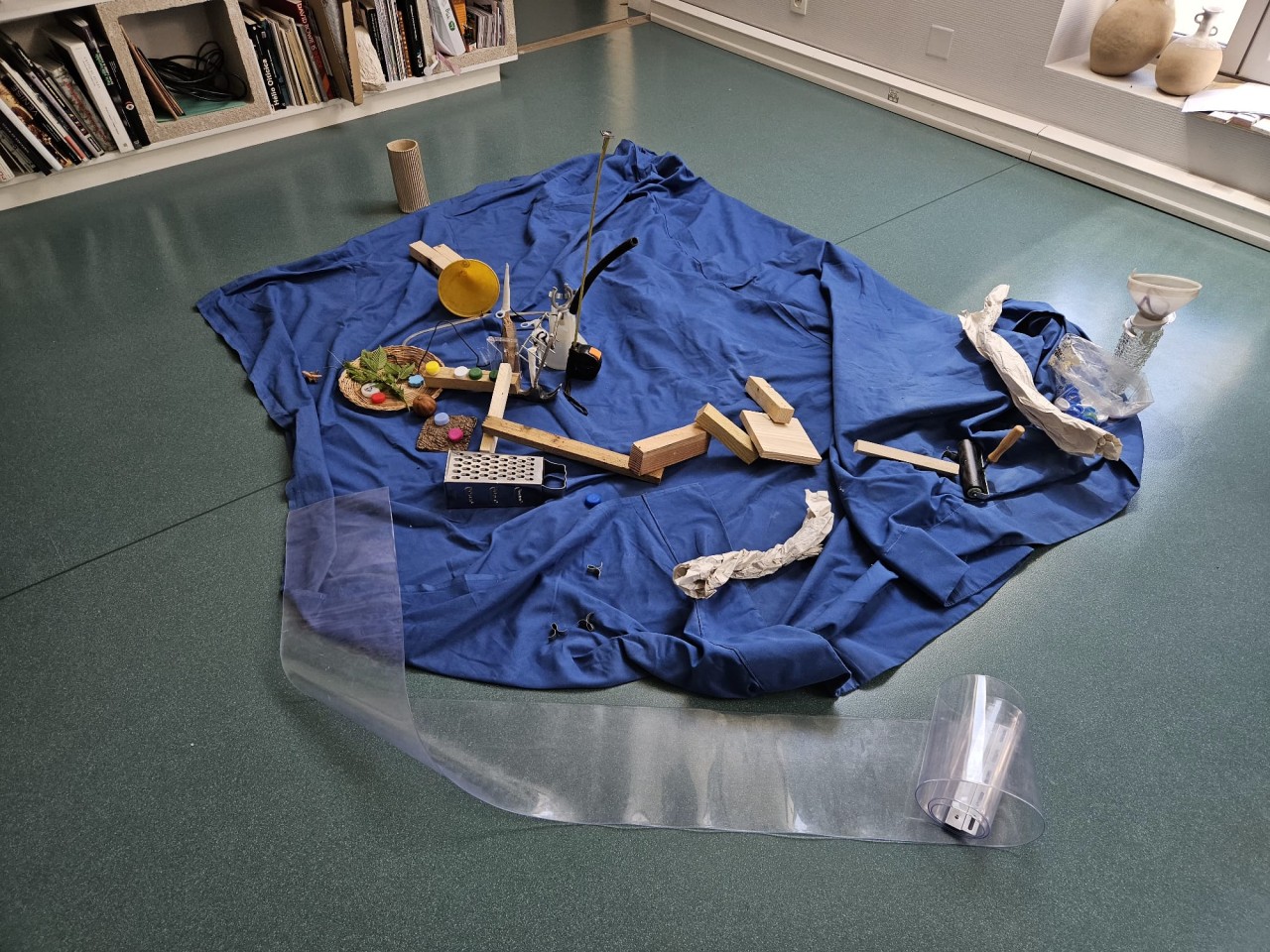
A yellow funnel takes the place of “welcome” in the collective space. At first, its wide opening faces outward; then it is turned over, and the narrow end becomes the point of contact. There is an oscillation between a broad-spectrum welcome that gradually narrows and a more discreet opening that expands over time. (…) The “Loire River” appears with the addition of a large blue fabric laid out along the constellation. (…) One participant proposes making the river the foundation of the entire activity. They are invited to follow through with the idea, and the group observes the effect of the action. With care, the participant moves each object, unfolds the blue textile fully, and replaces each item with precision.
Yet something has changed. It is no longer the same cosmos. Even though the nature and placement of the objects have not changed, the way we relate to the items we placed is no longer the same. This minor crisis of appropriation unfolds analogically with recurring episodes in the life of the collective, episodes each person may have sensed and seen reflected in the group’s unspoken experience.



